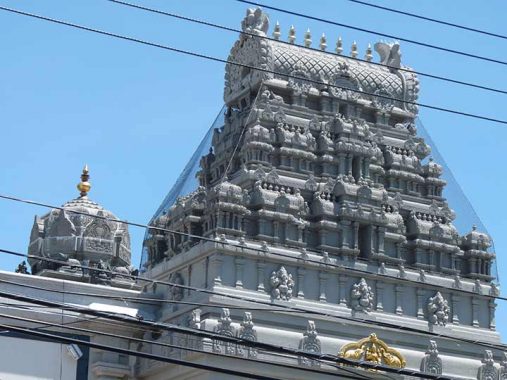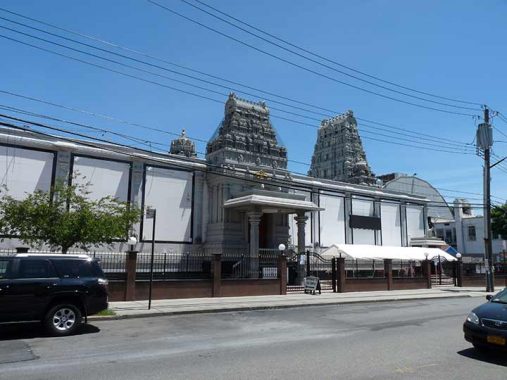
THE Ganesh Temple of the Hindu Temple Society of North America on Bowne Street just north of Holly was opened on July 4, 1977. As the first Hindu Temple in North America composed of largely imported materials, and constructed by artisans from India, Sri Maha Vallabha Ganapati Devasthãnam (or the Ganesh Temple) is one of the most impressive and historically important Hindu temples in the West. Flushing, Queens was chosen as the location for the Ganesh Temple based on three criteria: it was the gateway of the U.S.- all Indian immigrants came here and there was a large concentration of Hindus in the tri-state area of New York, New Jersey, and Connecticut; it was within walking distance for many, or one bus or subway fare; and the possibility existed to purchase a suitable site. Its strength and influence outside of New York is proven by the fact that the temple has served as a model for many other Hindu communities.

Bowne Street itself is named for a leader in religious freedom. Bowne House, on Bowne Street north of 38th Avenue in Flushing, Queens, was built in 1661 by English settler John Bowne. Peter Stuyvesant, continuing his reign of terror against religious dissenters, had Bowne, a Quaker, arrested in 1662. Before the construction of the Friends Meetinghouse on Northern Boulevard (already a colonial-era route in the late 1600s) Bowne’s house was the primary site for Quaker services. Sentenced to pay a hefty fine, Bowne refused and was jailed; he was subsequently exiled to Holland. While he was there, Stuyvesant’s bosses at the Dutch West India Company reversed Stuyvesant’s non-tolerant policy, claiming that the colony needed many immigrants to ensure economic expansion, no matter what faith they were. Bowne returned home to Flushing in 1664; the British sailed into New Netherland five months later, and Stuyvesant surrendered without a shot being fired.
As always, “comment…as you see fit.” I earn a small payment when you click on any ad on the site.
6/8/23
